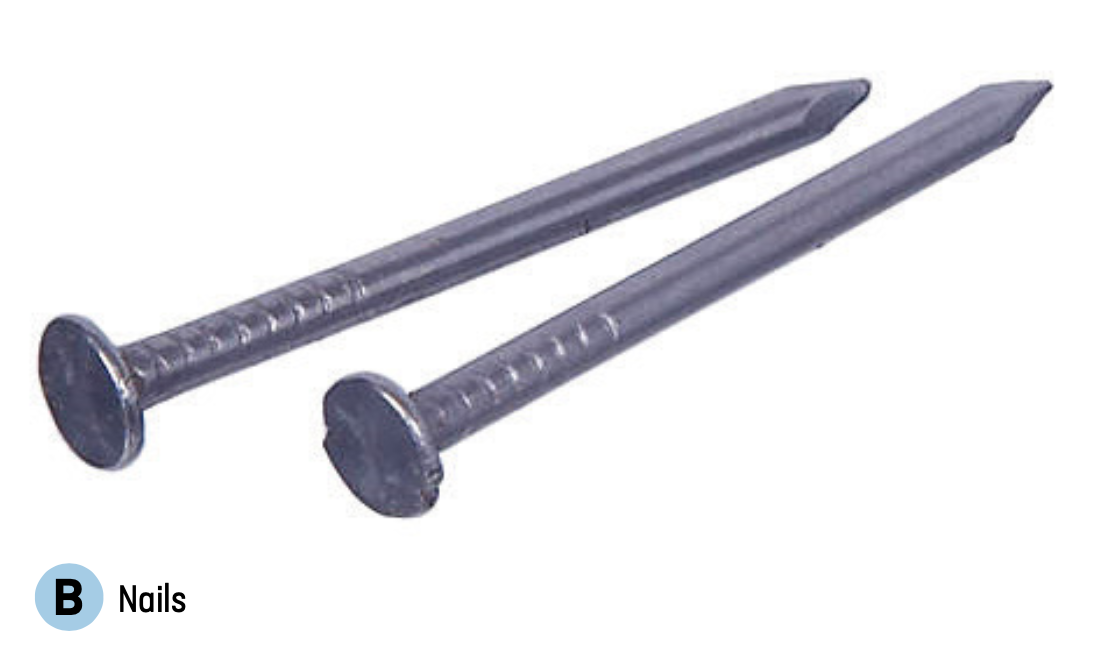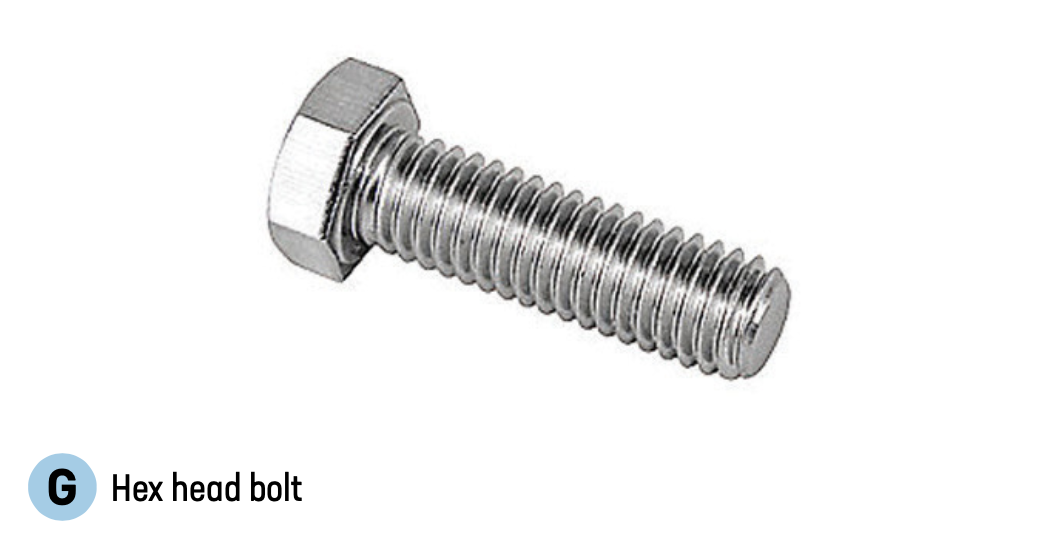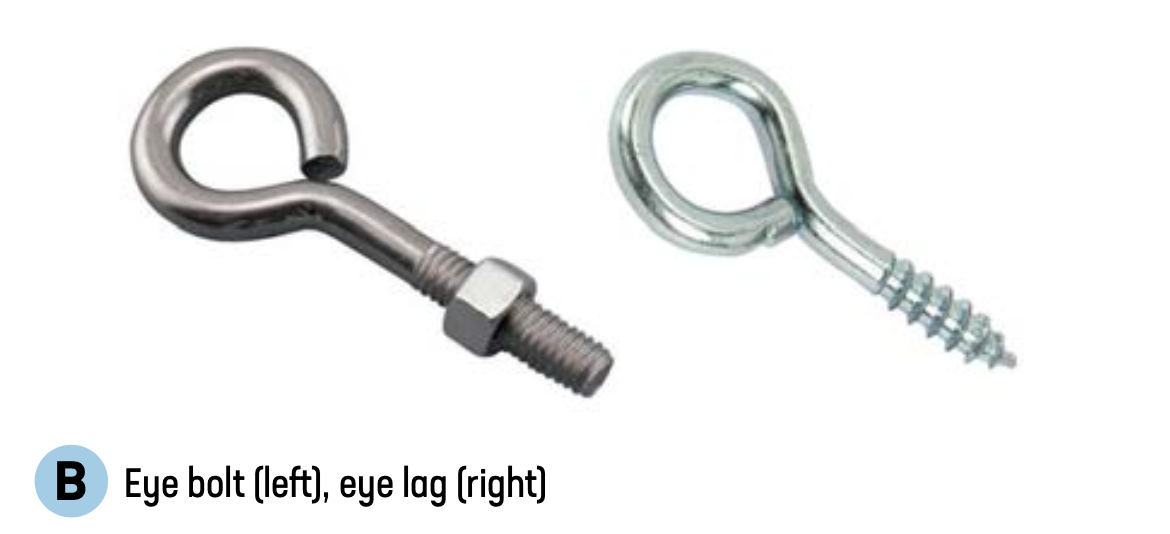Fasteners
Source of Knowledge: https://uwaterloo.atlassian.net/wiki/spaces/EIC/pages/31719588646/Types+of+Fasteners Physical devices used to attach or fasten materials, parts, and components together in a non-permanent way.
Types of Fasteners
Dowels: Pegs without heads that makers can pound into a hole. Wooden dowels will expand when used with wood glue, allowing parts to secure very tightly.

Nails: Material exerts more force as the nail goes deeper.
 Rivets: ??
Rivets: ??
 Pins: Similar to dowels, but made out of metal.
Pins: Similar to dowels, but made out of metal.

Screws: Tapered threads are designed to screw into a softer material. Straight threads are designed to be used with a nut, or thread into a matching threaded hole
Threads

Wood screws = lag screws/bolts
 Sheet Metal Screws
Sheet Metal Screws

Machine Screws: Large machine screws are called bolts

Carriage Bolts

Shoulder/Stripper Bolts: Smooth portion of the bolt intended to be used as a pivot

Eye bolts and Eye Lags: They have a circular ring on end and threads on the other.
Eye bolts = machine screw thread
Eye lags = wood screw thread

Hanger Bolts: Machine screw thread on one end and lag screw thread on the other. Used when a machine- screw-threaded stud is required to protrude from a wooden part.

Regular Nut: Common for outside to be hexagon, known as hex nut.

Lock Nuts (a.k.a. Nyloc nut): Like a regular nut, but has a piece of nylon at the end to prevent the nut from unscrewing. Handy for applications where a bolt should be mechanically secured but not completely locked in place.

T-slots: Used together with aluminum t-slot extrusion

Castle Nuts: Have notches in them so that a pin can be passed through the notches

Rivnuts/ Rivet Nuts: Rivets that have a threaded hole in them to accept a screw. Great for securing panels in sheet metal.

Inserts: Provide threaded holes just like rivnuts, but can be put into plastics, wood and composites.

Washers: Used to spread the load that a bolts exerts on the material it is fastening together (prevent bolt head from deforming/pulling through the material)

Lock washers: Plain washer that has been cut and sprung out of plane.

Threaded fasteners units of measure
All threaded fasteners are defined by their diameter, sometimes shown as “Ø”, and thread pitch (measure of the spacing between the threads).
A metric screw might be specified as M5×0.8, 20mm long, or M5×0.8×20. In this case, the M5 corresponds to the nominal size of the screw being 5mm. We use the term nominal because it is close to, but not exactly 5mm in diameter. The 0.8 corresponds to the thread pitch, which for metric fasteners is the distance in millimeters between each thread. The smaller the pitch for metric screws, the finer (physically smaller) the thread. Finally, the length is also specified in millimeters: 20mm in our example.
Heads
Countersink head